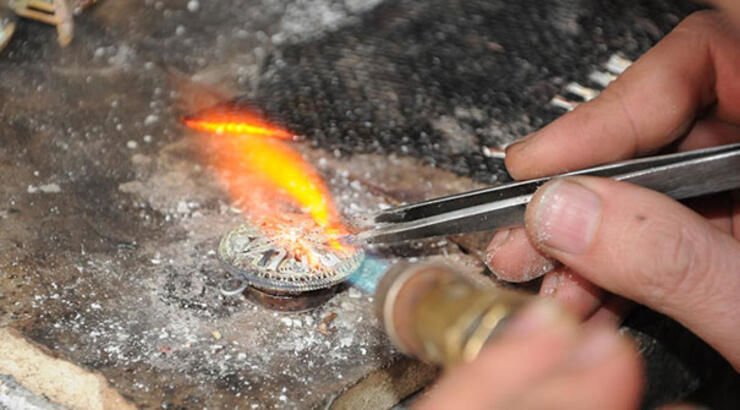It is estimated that silver, a precious, shiny, white metal, was used first in 4000 BC. The silver ring, is the first object which reached our age from ancient civilizations, belongs to the Copper Age and was found in Denizli Beycesultan.
İn the Turks, silver was mostly used with the inlay technique in the decorations on jewelry and various items and tools. after the 11th century.
Istanbul, the capital of culture and art, in the 16th and 17th centuries became the center of silverwork and preserved this feature until the end of the 19th century. The "savatlama technique", which is famous in Van,has been applied to all kinds of silverware and jewelry, which is made by black embroidery with lead on silver.
During the Ottoman period, many items such as silver pans, mugs, ewers, basins, vats, braziers, candlesticks, divites, mugs, jugs, asure bowls, plates, bath bowls, hookah bodies, rosebuds, censers, teapots and cup envelopes were used in daily life. Silver jewelry such as bracelets, earrings, necklaces, rings, and crowns were also widely produced. Silver was also used in the handle of the whip, behind the mirror, on the belt buckle, and in the decoration of the horse saddle and other harnesses. Belts made with the “filigree decoration technique”, one of the most beautiful examples of Ottoman silverwork, were frequently used. This technique was created by drawing the silver wires thickly, cutting them according to the desired shape and soldering them to each other, and was applied on the items. Filigree, which is unique to Mardin and Ankara's Beypazarı district, is one of the handicrafts that attracts attention and is admired today. Among the silverware and jewelry produced today, the art of silverwork, which preserves traditional features and includes contemporary motifs, fascinates individuals from all walks of life.
